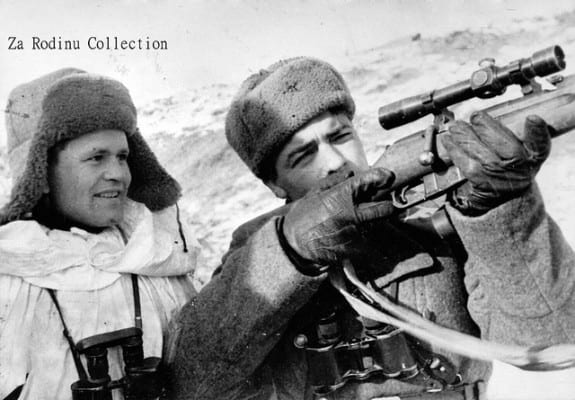
Vasily Zaitsev (left) training a companion. (Za Rodinu, via flickr.)
With his sense of sight restored, Zaitsev returned to the frontline, where he continued teaching snipers, commandeered a mortar platoon and became a Regiment Commander. He fought in Ukraine, at the Dnepr and in Odessa, sniping the enemy at the Dniestr River. But during the victorious day of 9 May 1945, he was in hospital again. He ended the war with the rank of Captain. After the war, Zaitsev lived in Kiev, where he studied at a textile university and then worked as an engineer before becoming the director of a textile plant.

Mamayev Kurgan is a dominant height overlooking the city of Volgograd (formerly Stalingrad) in Southern Russia. The name in Russian means “tumulus of Mamai.”
The original Mamayev Kurgan was a Tartar burial mound 102 metres high. The current formation is dominated by a memorial complex commemorating the Battle of Stalingrad (August 1942 to February 1943). The battle was a decisive Soviet victory over Axis forces on the Eastern front of World War II and arguably the bloodiest battle in human history.
After the war, the Soviet authorities commissioned the enormous Mamayev Kurgan memorial complex. Vasily Chuikov, who led Soviet forces at Stalingrad, lies buried at Mamayev Kurgan, the first Marshal of the Soviet Union to be buried outside Moscow. Soviet sniper Vasily Zaitsev was also reburied there in 2006.
Vasily Zaitsev died in 1991 and was buried in Kiev, although his final request was to be buried in the land he fought so hard to defend – Stalingrad. His wish came true on the 63rd anniversary of the Battle of Stalingrad, when Vasily Zaitsev was reburied with full military honors at Mamayev Kurgan in Volgograd, a monument in honor of the millions of victims of the battle. His rifle is on display in the Museum for the Defense of Stalingrad.
Vasily Zaitsev’s highest awards include: Hero of the Soviet Union, Order of Lenin, Order of the Red Banner (twice), Order of the Patriotic War (First Class), Medal for the Defense of Stalingrad and the Medal for the Victory Over Germany.
SOURCE: RUSSIAPEDIA
[/learn_more]
MAIN ARTICLE RESUMES HERE
After the war, Zaitsev, unlike Kyle, did not go into politics–or reality TV shows–but rather, he settled in Kiev where he took correspondence courses to become an engineer, and worked his way up to become the director in a textile factory. During the war, after being wounded, he wrote two books on sniper tactics which militaries around the world, including the U.S. military, still use today in sniper training.
Kyle, who tragically lost his life in Dec. 2013 when a post-traumatically stressed Iraq War vet went berserk on him at a shooting range in West Texas, was a notorious and well-exposed public liar. So, little about Eastwood’s movie—based on Kyle’s book, “American Sniper: The Autobiography of the Most Lethal Sniper in U.S. Military History“—can be relied upon.
“So you turn around and sue, expecting $2 million from a military widow and her fatherless children? Yeah, like that is going to help your reputation, jackass.”
“Chris Kyle was a true American patriot–the soldier who stood up for his country and saved so many lives by doing the job his Commander-in-chief gave him, taking out the bad guys. For his extraordinary work, Chris was known as “The American Sniper.” He was senselessly murdered on our own soil while helping a military brother. His widow and young children will forever feel a lot more “hurt” than you will, Jesse, after a sad verdict in your ridiculous lawsuit against Chris. . .”
In another adventure of dubious validity, a profile in the June 2013 issue of “The New Yorker” has Kyle claim he went to New Orleans in the aftermath of Katrina and he and a friend stationed themselves on top of the Superdome where they proceeded to “take out” about 30 armed looters. A U.S. Special Operations Command (SOCOM) spokesman told The New Yorker, “To the best of anyone’s knowledge at SOCOM, there were no West Coast SEALs deployed to Katrina.” He said Kyle’s story, “defies the imagination.” And, of course, there were no reports at the time of 30-some extra dead bodies laying around New Orleans with sniper bullets in their bodies.
As a New Republic headline proclaimed in the magazine’s obituary of the fallen sniper, “If Chris Kyle Had Been a Muslim, We’d Call him an Extremist.” After all, the New Republic opined, he had a “crusader’s cross” tattooed on his arm. In his book, Kyle wrote, “On the front of my arm, I had a crusader cross inked in. . . I wanted everyone to know I was a Christian. I had it put in red, for blood. I hated the damned savages I’d been fighting. I always will. They’ve taken so much from me.”
Kyle also liked to regale his friends with a story about being attacked at a gas station at gunpoint by two assailants, whom he claimed to have shot dead. But again, there were no witnesses, police say they found no bodies, and in general, the story sounds about as accurate as the New Orleans tale.
Reality show star
In 2012 Kyle co-starred in the reality TV show, Stars Earn Stripes, produced by Mark Burnett, in which celebrities supposedly competed in war games on behalf of charities. It was a twisted, repellent concept—half blatant chauvinism cum propaganda for imperial wars, and half insult to the peoples and nations used as mere backdrops for the stars’ ludicrous shenanigans— from the mind of one of Hollywood’s most reactionary power players (Burnett also produces Survivor, and 10 other shows, including The Apprentice, Shark Tank, etc. A Christian “fundie” and proud of it, in 2013 Burnett produced The Bible series that brought in around 100 million viewers, and ended up being the most-watched cable miniseries of the year. In 2014 Burnett went on to produce the feature film Son of God).
Gen. Wesley Clarke, former NATO Supreme Allied Commander, was roped in to host Stars Earn Stripes. Along with Kyle were the former “First Gentleman of Alaska,” Todd Palin; singer and actor Nick Lachey; retired professional boxer, Laila Ali, daughter of Mohammed Ali, who should have known better considering her father’s record of opposition to imperial wars; and TV Superman from “Lois and Clark,” Dean Cain. The show was mercifully cancelled after loud protests from many people and organizations, including many veterans.
As noted earlier, character questions had begun to pile up—even in mainstream outlets—by the time Kyle died. In a Guardian (UK) op-ed, Lindy West described Kyle as a “hate-filled killer” and asked, “Why are simplistic patriots treating him as a hero?” She pointed out that Kyle, in his autobiography called killing “fun”, said he “loved” it, and was convinced that he was taking out the “bad guys”. “I hate the damn savages,” Kyle said in his book. “I couldn’t give a flying fuck about the Iraqis.”
Kyle claimed 255 kills, with 160 confirmed by the Department of Defense, making him the most effective sniper in U.S. history.
All of the above would present difficult issues to a more socially responsible director when seeking to portray as tortured and contradictory an individual as Chris Kyle, but Eastwood does not fit that mould; his specialty, at least in the area of military flicks, is to produce pseudo-serious melodramas that leave out as much of the truth as necessary to end up with a hagiographic image of the chosen heroes. The upshot is highly effective emotional manipulation, and the public (and critics) eat it. I have no idea if Eastwood does this deliberately or not. Either way the effect is the same.
This is the propaganda imperial America wants people consuming, as America’s new generation of “wars of choice” requires unflagging supporters. To maintain the necessary propaganda momentum the ruling elite, via the Pentagon, its ubiquitous corporate media, and other less visible tentacles, is not averse at funding and endorsing Hollywood projects that crudely or subtly manufacture passionate support for foreign interventions and racist hatred of whichever “enemy du jour” falls in Washington’s crosshairs.
Critics accolades misguided
In their almost unanimous acclaim for Eastwood’s film, American critics —aping the producers’ assurances that the film is not really political and not really about Iraq (!) —have only shown the poverty of their intellect or simply their abject careerist conformity. As Peter Maass put it so well on his comments on the film for The Intercept,
Kyle’s memoir has been turned into a film starring Bradley Cooper and it’s an Oscar contender even before its national release on January 16. The Los Angeles Times hails its action scenes as “impeccably crafted,” while The New Yorker salutes Clint Eastwood for making other directors “look like beginners.” Unfortunately, Hollywood’s producing class, taking a break from exchanging catty emails about A-list stars, has created another war film that ignores history, and reviewers who spend too much time in screening rooms are falling over themselves in praise of it.
They should know better. In 2012, “Zero Dark Thirty,” about the hunt for Osama bin Laden, was lavishly praised by most reviewers, and it wasn’t until criticism emerged from political reporters like Jane Mayer and others (I wrote about it too) that the tide turned against the pro-torture fantasy at its core. The backlash, coming after the film made “best of the year” lists, was probably responsible for it (fortunately) being all but shut out of the Academy Awards. Hopefully the praise-and-reconsider scenario will recur with “American Sniper.” (How Clint Eastwood Ignores History in ‘American Sniper‘)
Maass is absolutely spot on. The moral context of a story with grave implications for our society is not something to kick aside as so much extraneous baggage. Zaitsev was shooting at the invaders, Germans—many Nazis—who were in his homeland plundering, murdering, raping and in general doing whatever they could to utterly destroy Stalingrad and kill all its people, not to mention deal a hard morale blow to the Soviet people and smash the Soviet Union itself. Not to mention that Germany had started the war after mounting some pretty cynical false flag events in Poland and elsewhere.
Kyle, on the other hand, was the invader in a war of choice that easily qualifies as an international War Crime as per Nuremberg Tribunal laws, while so-called “enemy combatants” like Mustafa were defending their country from imperialist domination and occupation. How many Americans, you may ask, would not resist a brutal invader under exactly similar circumstances? Apparently this elementary question never entered Eastwood’s skull.
And there are other points of congruency. Both films have subplots that feature strong women in supporting roles. In American Sniper, Kyle’s wife, Taya, played by Sienna Miller, portrays the hardships of the wife of a SEAL holding down the home front, and, after Kyle’s return, the difficulty of dealing with a man who’s spent months in a combat zone killing people and being tormented by the inevitable demons. In Enemy Tania, played by Rachel Weisz, is a Stalingrad resident in the local militia who becomes Zaitsev’s love interest during the Battle of Stalingrad.
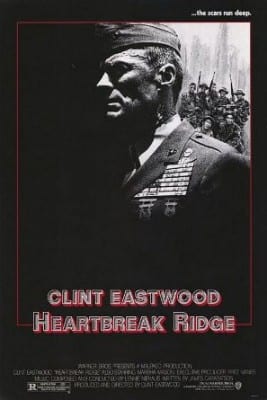 With Sniper Eastwood apparently yields again to a troubling penchant to sentimentalize bullies or war in general. In Heartbreak Ridge (1986) Eastwood constructed a script that whitewashed the enormous—in fact shameful—disparity between the forces of puny Grenada and the greatest superpower on earth. In his flick, it was the Marines who covered themselves in glory, although even some Marines found the deed a bit short of genuine heroism, considering their own record of combat in practically all latitudes against far more formidable opponents.
With Sniper Eastwood apparently yields again to a troubling penchant to sentimentalize bullies or war in general. In Heartbreak Ridge (1986) Eastwood constructed a script that whitewashed the enormous—in fact shameful—disparity between the forces of puny Grenada and the greatest superpower on earth. In his flick, it was the Marines who covered themselves in glory, although even some Marines found the deed a bit short of genuine heroism, considering their own record of combat in practically all latitudes against far more formidable opponents.
.
With Flags of Our Fathers (2006), focusing on Iwo Jima, Eastwood again chose war as the main canvas, and although he tried to “balance” the books by also including the Japanese side of the story, noble he, there’s enough luster and praise for the military to satisfy any man (or woman) in uniform these days.
War can be profitable. Heartbreak, for example, went boffo at the box office, chalking up almost a 1000% return on investment.
| Budget |
$15 million[1] |
| Box office |
$121,700,000[2] |
Eastwood’s political contradictions
I guess the solution to Eastwood’s riddle is that we should simply note what he does instead of what he says. It is clear that Eastwood is ignorant or indifferent to the distinction between subjective and objective when it comes to evaluating an artist’s social impact. Whatever he may think subjectively, it’s undeniable that, objectively, where it counts, Eastwood has been more often than not a supporter of conservative approaches to social and foreign policy, and that his cumulative oeuvre has consistently defended a rightwing or establishmentarian position.

Eastwood with Lou Gossett, Jr. and President Ronald Reagan in July 1987. (Credit: Wikipedia/CC)
In 1992, Eastwood acknowledged to writer David Breskin that his political views represented a fusion of Milton Friedman and Noam Chomsky and suggested that they would make for a worthwhile presidential ticket.[329] In 1999, Eastwood stated, “I guess I was a social liberal and fiscal conservative before it became fashionable.”[330] Ten years later, in 2009, Eastwood said that he was now a registered Libertarian.[331]
Despite being heavily associated with firearms in his Westerns and cop movies, Eastwood has publicly endorsed gun control since at least 1973. In the April 24, 1973, edition of the Washington Post, the star stated that “I’m for gun legislation myself. I don’t hunt.”[332] Two years later, in 1975, Eastwood told People magazine that he favors “gun control to some degree”.[333] About a year later, Eastwood remarked that “All guns should be registered. I don’t think legitimate gun owners would mind that kind of legislation. Right now the furor against a gun law is by gun owners who are overreacting. They’re worried that all guns are going to be recalled. It’s impossible to take guns out of circulation, and that’s why firearms should be registered and mail-order delivery of guns halted.”[334] In 1993, he noted that he “… was always a backer” of the Brady Bill, with its federally mandated waiting period.[335] In 1995, Eastwood questioned the purpose of assault weapons. Larry King, the famous television host and newspaper columnist, wrote in the May 22, 1995, edition of USA Today that “My interview with Eastwood will air on ‘Larry King Weekend’ … I asked him his thoughts on the NRA and gun control and he said that while people think of him as pro-gun, he has always been in favor of controls. ‘Why would anyone need or want an assault weapon?’ he said.”[336]
But regardless of Eastwood’s motives, there is no doubt that the US establishment welcomes movies like “American Sniper” because they promote support for its wars of plunder, wars that would be difficult to get people behind if not for mountains of propaganda.
The war in Iraq, of course, was founded on lies—nonexistent weapons of mass destruction, and the suggestion that Saddam was involved in the 9/11 attacks—something the media could have easily disproven, had American journalists discharged their duty instead of simply acted as “stenographers to power” safeguarding their careers. In fact it has been massive and nonstop unchallenged lies since 9/11 that have also permitted the inauguration of a new era of “permanent terror psychosis”, with terrible consequences for real democracy and freedom in America and the world.
This is not the place to offer a detailed analysis of the betrayals of the American press, which has now fully integrated itself into the system’s propaganda machine, but it should be said that Hollywood —an engine of mass communications that now comprises both cinema and television—is certainly not an innocent bystander.
Just to enumerate some of the more recent outrages, it is precisely this highly polluted and confused public consciousness that has allowed Washington to assault and destroy Libya, Syria, Iraq, and Afghanistan, a strategy that has now given rise to our own Frankenstein in ISIL, al Qaeda, etc., but which —fortunately for the military-industrial-security complex—provide further fuel for our endless “anti-terror wars”. The same massive ignorance and disinformation has enabled the West to pull a fascist coup in Ukraine; ignore the genocidal Israeli attack on Gaza and Kiev’s war on Novorussia, while also defusing the “Arab Spring” from Cairo to Bahrain, etc, etc. Ironically, such appalling criminality pales in comparison to the even more catastrophic policies being rolled out by NATO under US hegemony, including the effort to isolate and destabilize China for the crime of being a competing power, and the vicious and hypocritical demonization of Russia and her leader, Putin—all of it pushing the world that much closer to a final nuclear conflagration.
ABOUT THE AUTHOR
NOTES
Stalingrad (2013), also presents a realistic vision of this conflict, and, naturally, the Russian perspective. Worth checking out.
Distributed by Warner Bros.
And now a word from the Editors of The Greanville Post
FRIENDS AND FELLOW ACTIVISTS—
AS YOU KNOW, THERE’S A COLOSSAL INFORMATION WAR GOING ON, AND THE FATE OF THE WORLD LITERALLY HANGS ON THE OUTCOME.
THEIR LIES.
THEIR CONSTANT PROPAGANDA.
OUR TRUTH.
HUGE ISSUES ARE BEING DECIDED: Nuclear war, whether we’ll live in democracy or tyranny, dignity or destitution, planetary salvation or doom…It’s a battle of communications we can’t afford to lose.
So, we request that you do something.
Reading is not enough. Action of some sort is needed.
Start with something simple: Share our posts.
If you don’t, how can we ever neutralize the power of the corporate media?
And if you took the time to read this article, and found it worth SHARING, then why not sign up with our special bulletin to be included in our future distributions? And please tell others about The Greanville Post.
YOUR SUBSCRIPTIONS (SIGNUPS TO THE GREANVILLE POST BULLETIN, SEE BELOW) ARE COMPLETELY FREE, ALWAYS. AND WE DO NOT SELL OR RENT OUR EMAIL ADDRESS DATABASES—EVER. That’s a guarantee.


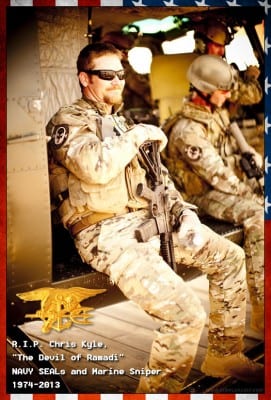
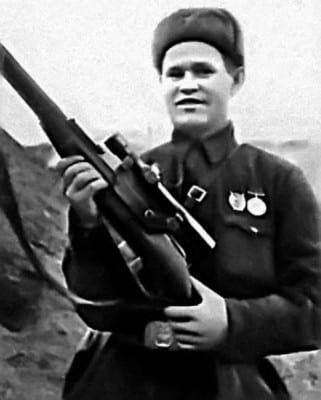
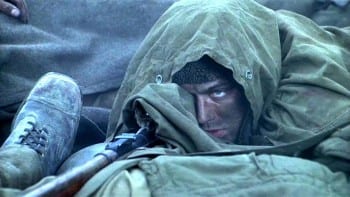
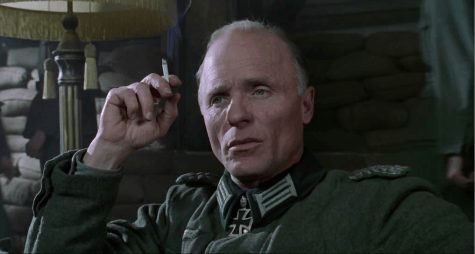



 With Sniper Eastwood apparently yields again to a troubling penchant to sentimentalize bullies or war in general. In Heartbreak Ridge (1986) Eastwood constructed a script that whitewashed the enormous—in fact shameful—disparity between the forces of puny Grenada and the greatest superpower on earth. In his flick, it was the Marines who covered themselves in glory, although even some Marines found the deed a bit short of genuine heroism, considering their own record of combat in practically all latitudes against far more formidable opponents.
With Sniper Eastwood apparently yields again to a troubling penchant to sentimentalize bullies or war in general. In Heartbreak Ridge (1986) Eastwood constructed a script that whitewashed the enormous—in fact shameful—disparity between the forces of puny Grenada and the greatest superpower on earth. In his flick, it was the Marines who covered themselves in glory, although even some Marines found the deed a bit short of genuine heroism, considering their own record of combat in practically all latitudes against far more formidable opponents.







